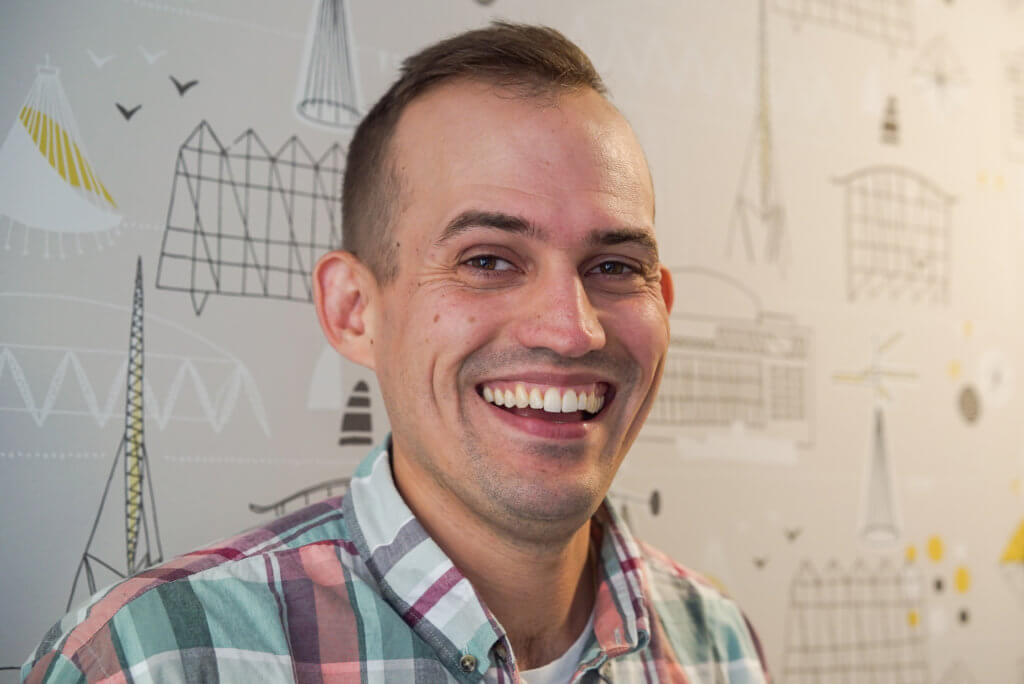Episode
Highlights
TELLING THE HISTORY
“One of the issues that came to front is we’re going to have to tell the story of slavery as a part of the building of the synagogue, the building of the economy and the Jewish interaction in the community. There was a lot of concern around that because the concern was: my goodness we’re Jews, and we were enslaved. And that’s a central part of our belief system. And now we have to talk about Jews owning fellow human beings. My remark was, ‘We have to tell the story because it’s factual.'”
—KEITH STOKES
I watch as Duchess Quamino and Phillis Lyndon talk to each other, forever on loop in a kiosk in a small museum, right next to Aaron Lopez, one of the men who made Newport into the most active slave trading port in the colonies before the Revolutionary War.

Keith Stokes in God’s Little Acre | Photo: Ana González
WALKING THROUGH STONES
I kneel down to make out what the tombstone says. It’s covered in lichen, but I can read: “Peter, son of Peter Cranston and his Wife Phillis, Drowned September 7th, 1771, to great loss of his parents and his Master, A. Lopez.
“I do think we get weighed down with the slave trade. And to be candid, I’m very not interested in the stories of Aaron Lopez as a slave trader. I’m more interested in the stories of Zingo Stevens and Lukaba Moraka and Bristol Yama. I can give you dozens upon dozens of names of Africans and later African-Americans who lived and worked in worshiped in colonial Newport.”
—KEITH STOKES

Duchess Quamino’s marker with its restored cap | Photo: Ana González

Peter Cranston’s headstone, paid for by Aaron Lopez | Photo: Ana González

The Stevens Shop today| Photo: Ana González
INSIDE THE STEVENS WORKSHOP
The Stevens family makes all of the markers for people dying in colonial Newport.
“And when you go up to the colonial burial ground, and you look at how many freaking stones the Stevens produced, you’re like “Wow, man. How did they make so many stones?”
—NICK BENSON
And they had enslaved Africans and indigenous people working in their shop, helping them haul ass. One of them is Zingo Stevens.

The marker for Phillis Lyndon and Prince | Photo: Keith Stokes
LIFE HOW SHORT. ETERNITY HOW LONG.
Keith is talking about the soul effigy on the top of the stone. It’s a carving of a woman and her baby. Phillis and Prince. And it’s in the style of the colonial period, but Phillis is wearing a headwrap, and Prince has curly hair and a wide nose. There are clouds and arrows surrounding them.
“You won’t find this type of imagery anywhere where Africans are enslaved in America or the Americas. One, you’ll very rarely find a marker. And if you found a marker, you wouldn’t see this.“
—KEITH STOKES
Their inscription reads: “In memory of Phillis, a late faithful Servant of Josias Lyndon, Esq. and Wife of Zingo Stevens, who died March 9th, 1773. Aged about 27 years. Also Prince, their Son, who died March 22nd, 1773. Aged 2 months and 27 days.” Below that, the last sentiment of the carver: “Life how Short. Eternity how Long.”

The sign leading visitors to God’s Little Acre | Photo: Ana González
LEGACY OF GOD'S LITTLE ACRE
The markers in God’s Little Acre show a history of people of African descent fighting for their lives and their acceptance into this new society that they have been forced to enter.
And that continues to this day. It’s an active burial ground. Keith’s family is buried there. And when he dies, he’ll be right there beside them.


